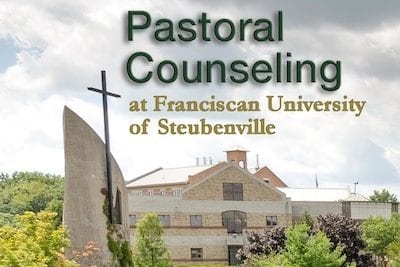According to Benner, strategic pastoral counseling should be time-limited, holistic, structured, involve assigned homework between sessions, is church based, spiritually focused and explicitly Christian. Some of these aspects overlap with clinical strategies; for example in achieving brief time-limited counseling a pastoral counselor may draw upon the practical skills and clinical techniques of basic listening, being directive, viewing the therapeutic relationship as a partnership and focusing on one specific issue or “goal”. The structured approach of five short-term counseling sessions gives the pastoral counselor time to identify, assess and implement a strategy to work through an issue. This resembles the model employed at my internship site which is rolled out across the clinical mental health field where two goals are reviewed as part of a three month treatment plan, averaging out to six sessions per issue. Pastoral counseling obviously differs greatly from the clinical model in the latter three characteristics of Benner’s Strategic Pastoral Counseling Model. On the surface, spiritual Christian issues are often masked by seemingly mundane problems in the lives of clients, yet pastoral counselors should listen for the underlying personal meaning in theological questions and seek to move from theological generalities to spiritual particularities. Thus in paying attention to the deeper more personal experiences that are behind much of the language of clients, the pastoral counselor overlaps with the psychoanalyst in exploring beneath the “tip of the iceberg” of clients’ consciousness. The client-centered approach of entering into an experience of the client’s story draws a parallel with the philosophical Judeo-Christian roots of humanistic and existential psychotherapy. The client is “encountered” in the therapeutic relationship as reflected in The Encounter Stage of Benner’s Strategic Pastoral Counseling Model. This involves boundary setting, exploring relevant history, the client’s concerns and achieving a mutually agreeable focus for counseling. In addition to this, a pastoral diagnosis is conducted by taking into account the client’s awareness of God such as their attitude towards God, the degree of acceptance of God’s grace, repentance and responsibility, response to God’s leadership, church involvement, fellowship experience, ethics and the client’s openness to faith.
In addition to drawing upon basic listening skills, client-centered therapy, Rogers’ unconditional positive regard and problem solving skills, there are many useful counseling techniques that can be adapted to a Christian framework based upon the client’s need and preference. The overlap between clinical and pastoral counseling strategies is not only present in the implementation of counseling approaches but also in the application of practical skills and techniques. This overlap is lessened when using Christian resources specifically unique to pastoral counseling which integrates clinical and pastoral strategies. For example psychodynamic psychotherapy may work well with clients open to discussing and resolving their past as well as exploring the unconscious. On the other hand, the concept of a “blank slate” therapist appears to be more suited to a clinical setting than the pastoral “holistic” approach of healing all aspects of a client. For dream interpretation, the pastoral counselor could integrate skills like imagery rehearsal therapy from Krakow & Zadra’s Clinical Management of Chronic Nightmares (2006) with practical dream interpretation methods for pastoral counseling (Kelly Bulkeley, 2000). If the client was eager to focus on the “hear and now stressors” in terms of working in the present then a Gestalt approach or the use of reality therapy would seem appropriate. The “holism” philosophy of Gestalt parallels to some degree the “holistic” approach of pastoral counseling by viewing the person as part of a whole which includes their thoughts, feelings, behavior, body sensations, dreams and spirituality.
During The Engagement Stage of Benner’s model, aspects of the client’s problem are explored and resources for coping or change are selected. In the use of CBT techniques there is some overlap for clinical and pastoral counselors. For example, if a client has anxiety or anger issues we might teach them relaxation coping skills such as diaphragmatic deep breathing followed by a mindfulness technique such as progressive muscle relaxation or grounding techniques with the five senses. But pastoral counselors could integrate these techniques with Christian resources such as having clients pray The Jesus Prayer on beads while practicing deep breathing; “Lord Jesus Christ, Son of the Living God” is prayed on the inhalation and “have mercy on me, a sinner” would be prayed on the exhalation. Another resource might be spiritual music which could also be played during a Christian meditation, which is another form of prayer aimed at helping the client reflect on the revelations of God perhaps using imagery or biblical passages about Jesus. Meditation is a great resource for pastoral counseling as in addition to meditations conducted in session; there are many group Church retreats that take place within Christian communities that could be recommended by the counselor. Different charisms within the church such as the Benedictine (order), Franciscan (charity), Dominican (academia) and Ignatian (Spiritual exercises) also provide much literature for specific meditation topics. I once attended a meditation based on Jesus that was part of a morning yoga class with a group of Indian novices at a missionary convent in rural India; this experience was intensified by the dancing peacocks that had flown onto the adjacent balcony. Other techniques might be for the pastoral counselor to teach a client to slowly repeat a calming word or phrase such as a piece of scripture or short prayer that would help them reduce anxiety or anger for example. Cognitive restructuring techniques could practically apply biblical principles as examples to counter dichotomous thinking with a more Christian understanding of patience and forgiveness. Similarly, assertive communication skills could be taught through a faith based perspective drawing upon resources from scripture and spiritual literature.
There are countless resources unique to pastoral counseling; homework-based counseling that focuses on specific or general issues can draw upon many devotional and inspirational books. Some Christian authors include C. S. Lewis, H. Norman Wright, Henri Nouwen, Larry Crabb, Scott Hahn (Catholic), Andrew Lester (Protestant) and my favorite Conrad Baars’ Born Only Once: The Miracle of Affirmation (2001). Bibliotherapy would employ Christian poetry, books, scripture and prayer for the client’s inner healing. Prayers are another powerful resource for pastoral counselors to use and can be specifically chosen to address clients’ issues. For example anger which is rooted in pride might be tempered by reciting prayers like Mother Theresa’s Do It Anyway which advocates being charitable and forgiving. The Serenity Prayer is a resource often used in AA meetings but would also work for many issues such as the desire to increase faith and trust in God’s providence. The Peace Prayer of St Francis is a resource that asks for the character virtues of meekness, kindness and patience which would counter anger. Theophostic prayer is a unique resource for pastoral counselors that can be implemented when helping emotionally wounded people to uncover the origin of their inner pain and to find peace through receiving personal truths from God. The seventh characteristic of Benner’s model “explicitly Christian counseling” is achieved by implementing the resources discussed above which should be carefully selected and relevant to the client’s issue. Lastly, the sacraments of the church will serve to sanctify both the therapist and client’s life in rejecting sin, growing towards God and healing. Finally, the pastoral counseling process ends with The Disengagement Stage after evaluation of client’s progress, arranging a suitable referral if needed and terminating the counseling when the sessions are no longer necessary.






